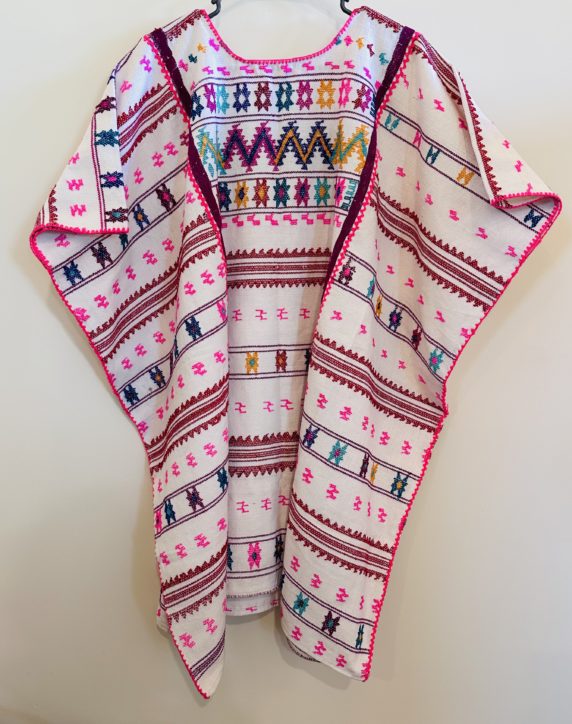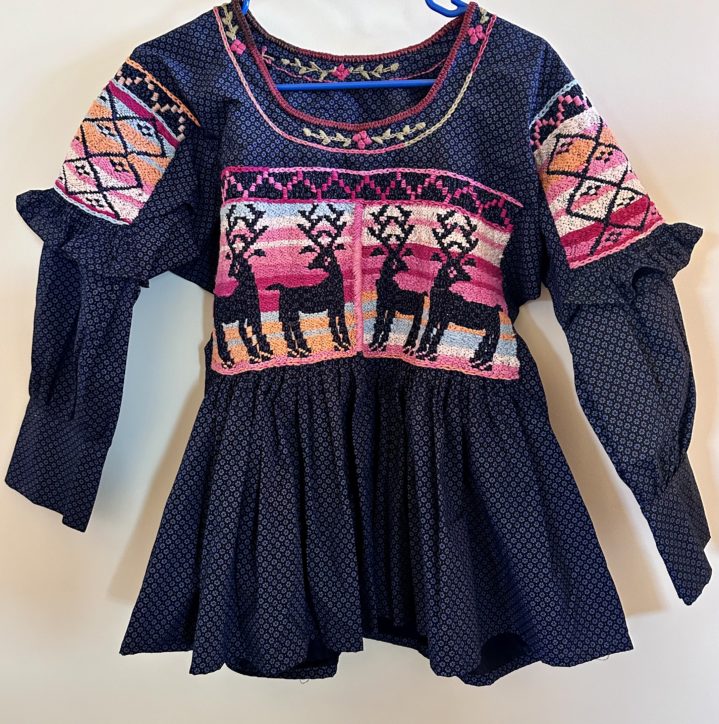Our group is here in Oaxaca for the Day of the Dead Documentary Photography Expedition. We are practicing using tripods and camera settings for night photography. Tonight is the REALLY BIG NIGHT. We are going to the Xoxocotlan cemetery. That did not stop us from staying out on the streets of Oaxaca until very close to midnight!
After dinner last night (at a really great Italian restaurant called La Vieja Lira, [Pino Suarez #100, Centro Historico, 951-516-1122] that I may write about later) we meandered to the Zocalo, cameras and tripods in hand. Bill Bamberger is an extraordinary teacher and coach, and every step of the way will check photo results, give tips and techniques, suggest various shutter speeds and ask us to stretch and experiment.
I experimented with shutter speeds ranging from f3.5 to f9 using automatic Aperature setting on my Nikon D40X. I am using a 28-300mm Nikkor lens. The shutter speed for this one was f7. I started bracketing my photos, and decided I liked this one with the stronger shadows to show the curve of the ancient tree trunk. The zocalo is filled with trees like this.
I really wanted to capture the strength and sculptural beauty of those massive trees. Lots of pedestrians are out this time of night. Of course, it’s Muertos and there is a lot to celebrate.
You can still see plenty of tourists and locals mingling this time of night. Note the man with the camera around his neck on the right! Perfectly SAFE in case you are wondering.
And, finally, the wonderful El Teatro Macedonio Alcala (below) at night. And, if you click here you can see what it looks like in daylight. The theatre is an incredible performance venue for classical music, theatre, and broadcasts from the Metropolitan Opera.

























Day of the Dead Parades in Oaxaca
Cheryl and I were sitting on the Zocalo at a lovely outdoor table under the Portico Benito Juarez at Restaurante Terra Nova. I was sipping my favorite non-alcoholic beverage — mineral water bubbly mixed with fresh-squeezed limeade and eating a delicious chicken, avocado and cheese sandwich made with whole wheat baguette. The Zocalo was ablaze in color.
The Scene: Sky pure blue, air fresh and clear, jacarandas in full bloom regalia giving forth bright coral flowers. Balloon vendors held their own parade, holding dozens of reflective beauties by strings ready for parents to buy for begging children. The young woman selling multi-colored cotton candy could easily hide behind her offerings.
There was an air of expectancy, excitement, the burst of Muertos energy waiting to happen. Then I heard them. The sound of a band coming toward us, trumpets, drums, tuba, clarinets, flutes.
Behind them was a wave of colorful banners, streamers and flags carried by children, women and men dressed in extraordinary Isthmus of Tehuantepec splendor. Those too young to walk rode on the shoulders of fathers, brothers and uncles. Even the grandmothers joined the parade!
It is a perfect time for mothers and daughters to dress up and take part together.
And for little boys to practice being big caballeros.
Oaxaca is a surprise this time of year. Around every corner is something extraordinary.
Like this:
2 Comments
Posted in Cultural Commentary, Oaxaca Mexico art and culture, Photography, Travel & Tourism
Tagged blogsherpa, day of the dead, Mexico, Oaxaca, parades